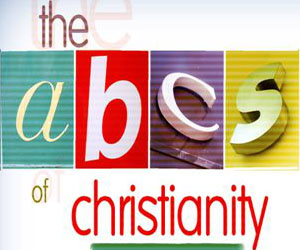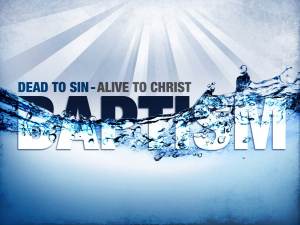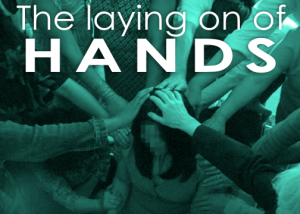When I was in kindergarten, I remember learning my ABC’s. We sang a simple song  which helped us to memorize the alphabet. I’m sure you sang the same song: “….now I know my abc’s. Tell me what you think of me?” What would my professors in college have thought if instead of reading history, philosophy or psychology, I asked if I could sing my “ABCs” again and again. Most likely they would’ve thought that I was a mental case and nowhere near being ready for college, or maybe they might have thought they were being “pranked”.
which helped us to memorize the alphabet. I’m sure you sang the same song: “….now I know my abc’s. Tell me what you think of me?” What would my professors in college have thought if instead of reading history, philosophy or psychology, I asked if I could sing my “ABCs” again and again. Most likely they would’ve thought that I was a mental case and nowhere near being ready for college, or maybe they might have thought they were being “pranked”.
Along these lines the writer of Hebrews says that if we want to move on to maturity as Christians, we need to leave the elementary doctrine of Christ (the ABC’s of the faith) and move on to more difficult matters which require greater study and concentration.
But here’s the rub: What the writer of Hebrews considers as the elementary teachings of the Christian faith, most Christians today would be dumbfounded to explain. Here are the ABC’s, the basics of the Christian faith according to the book of Hebrews.
 When you become a Christian, here’s what you need to KNOW and DO as presented here in Hebrews 6. Here are your ABC’s:
When you become a Christian, here’s what you need to KNOW and DO as presented here in Hebrews 6. Here are your ABC’s:
- Repentance from dead works that lead to death. This could be a reference to paganism, but certainly would include repentance from our trust in this world system. As the Apostle Paul stated, all things that were of worth or prestige for him, he counted as the excretion that you flush down the toilet. In other words, Paul, who had excelled at learning, put no trust in his academic endeavors. Do we get our identity from a piece of paper hanging framed on the wall, or does our identity come from Christ? What do we value as important? True repentance means valuing ONLY those things that are kingdom values.
Dead works can mean anything that we participated in that gave our life meaning and purpose, apart from Jesus and His saving grace.
- Faith towards God. This is spelled out more fully in Hebrews 11 where examples are given of those Old Testament saints who exhibited authentic faith toward God. Hebrews gives us a picture of what “real faith” toward God looks like.

- Teaching about baptisms. What baptisms? I believe the writer of Hebrews is talking about John’s baptism of repentance, and then the New Testament baptism into Christ. According to the community of believers in the book of Acts, baptism meant that you were burying your old man in the waters of baptism and being raised to a new life in Christ. Many churches today baptize new believers as a symbolic act, but that is not what the Apostle Paul writes in Romans 6:3-4. Paul is talking about a spiritual reality that takes place when a new believer is submerged into the waters of baptism. There’s NOTHING symbolic about it. Also, baptism was the way that Christians announced their faith in Christ to the world. They didn’t walk down the aisle of a church, or pray the sinner’s prayer—they announced to the world that they were following Jesus by following him into the waters of baptism.
- Teaching about the laying on of hands. What’s that mean? In many evangelical
churches, you’d be hard-pressed to see an example of the “laying on of hands” but here in Hebrews, it’s referred to as one of the elementary teachings of the faith. The “laying on of hands” which is still practiced today in many charismatic and Pentecostal churches around the world, was associated with baptism. The laying on of hands was done to impart a blessing, or to impart the power of the Holy Spirit to the believer.
Acts 8:18 says that Simon saw that the Holy Spirit was given through the laying on of  hands. Paul writes to Timothy to fan the flame of the gift that was given to him through the laying on of hands. So, we lay hands on believers for prayer, for imparting the power of the Holy Spirit, for healing, for blessing. The elders in the church at Antioch fasted, prayed and laid hands on Paul and Barnabas before sending them off to Cypress. I could give many more scriptural examples but you get the idea.
hands. Paul writes to Timothy to fan the flame of the gift that was given to him through the laying on of hands. So, we lay hands on believers for prayer, for imparting the power of the Holy Spirit, for healing, for blessing. The elders in the church at Antioch fasted, prayed and laid hands on Paul and Barnabas before sending them off to Cypress. I could give many more scriptural examples but you get the idea.
- Resurrection of the dead and eternal judgment. What is this all about? It should more accurately be translated “judgment in the coming age.” This is teaching about life after death, about rewards for the good and punishment for the wicked. The resurrection of Christ was the first fruits of a harvest where subsequent believers would be resurrected and given new bodies.
The teaching on eternal judgment would include that those who are unbelievers will be judged as Paul writes in Romans 2:5, “Because of your hard and impenitent heart, you are storing up wrath for yourself on the day of wrath when God’s righteous judgment will be revealed.” The teaching on judgment would’ve included God’s righteous judgment which observed the suffering of his saints on his behalf and the assurance that their faith would be rewarded. Finally, teaching on eternal judgment would include the Great White Throne judgment in Revelation 20:11 where the dead were judged according to the book of life, and according to what they had done.
I’ve just scratched the surface touching on each of these elementary teachings of the Christian faith. But the sad fact is that most Christian churches don’t teach these ABC’s of the Christian faith. Sadly, I have to admit that as a pastor, I too failed in this regard. I taught these basics in bits and pieces but not to the extent that those in my church could articulate what they really meant with any real understanding.
The point that the writer of Hebrews is making is not that we go back over this ground but that we MOVE on to maturity in Christ. But how can we move on to maturity if we’ve never studied the basics? It’s not that we’ve forgotten our ABC’s of the Christian faith—it’s that we have NEVER learned them. We’ve just been getting by on the equivalent of grunts and hand signals, like some primitive tribe.

